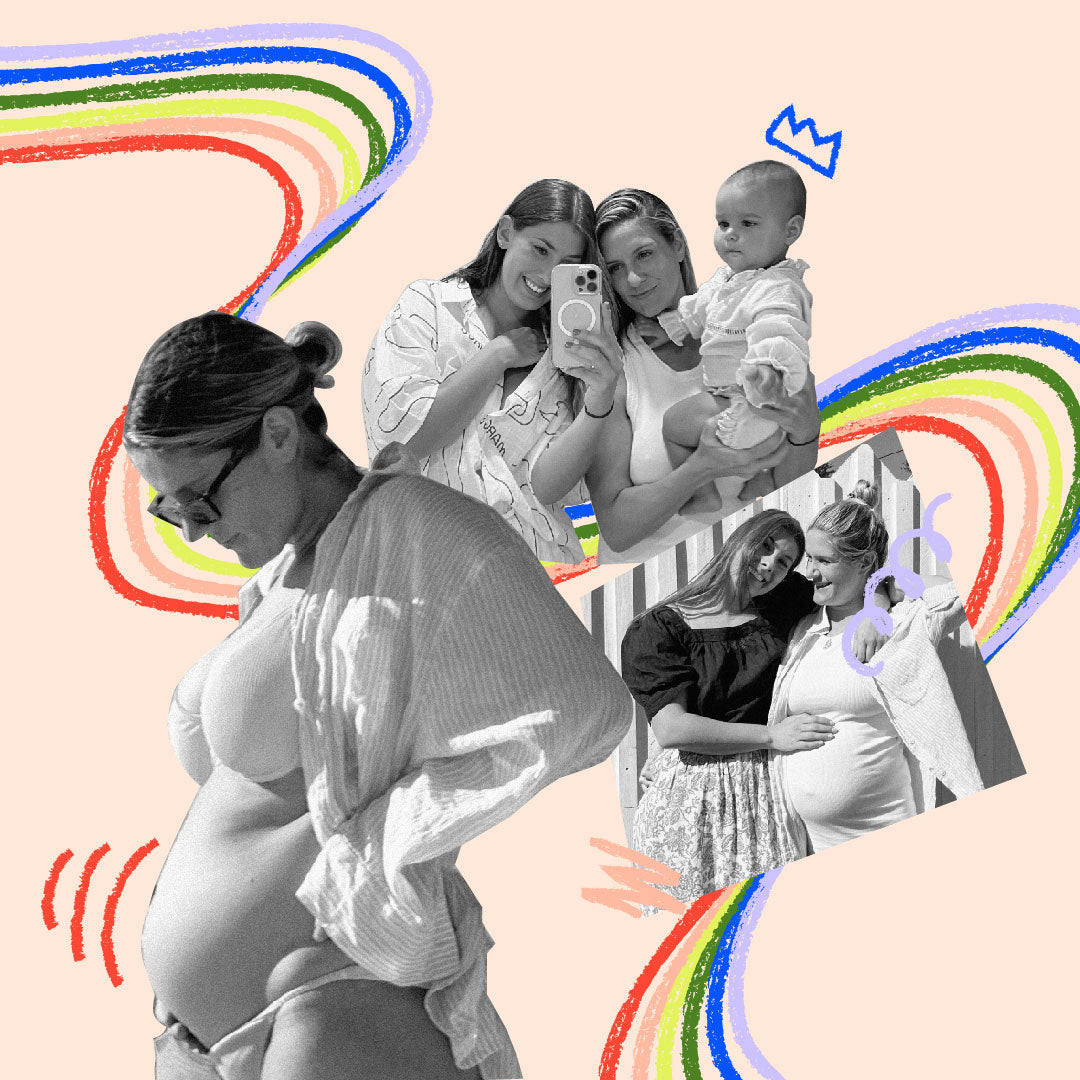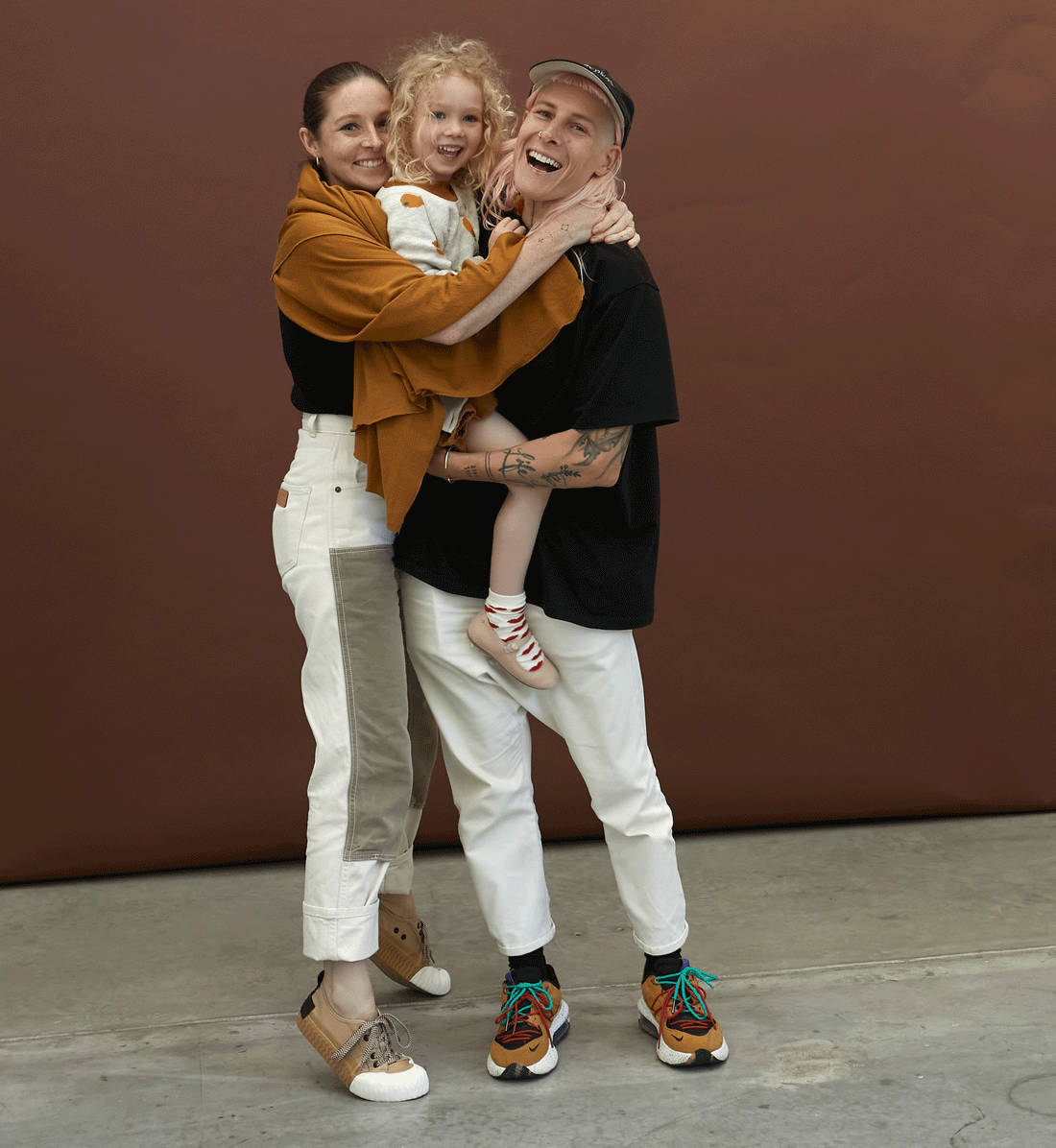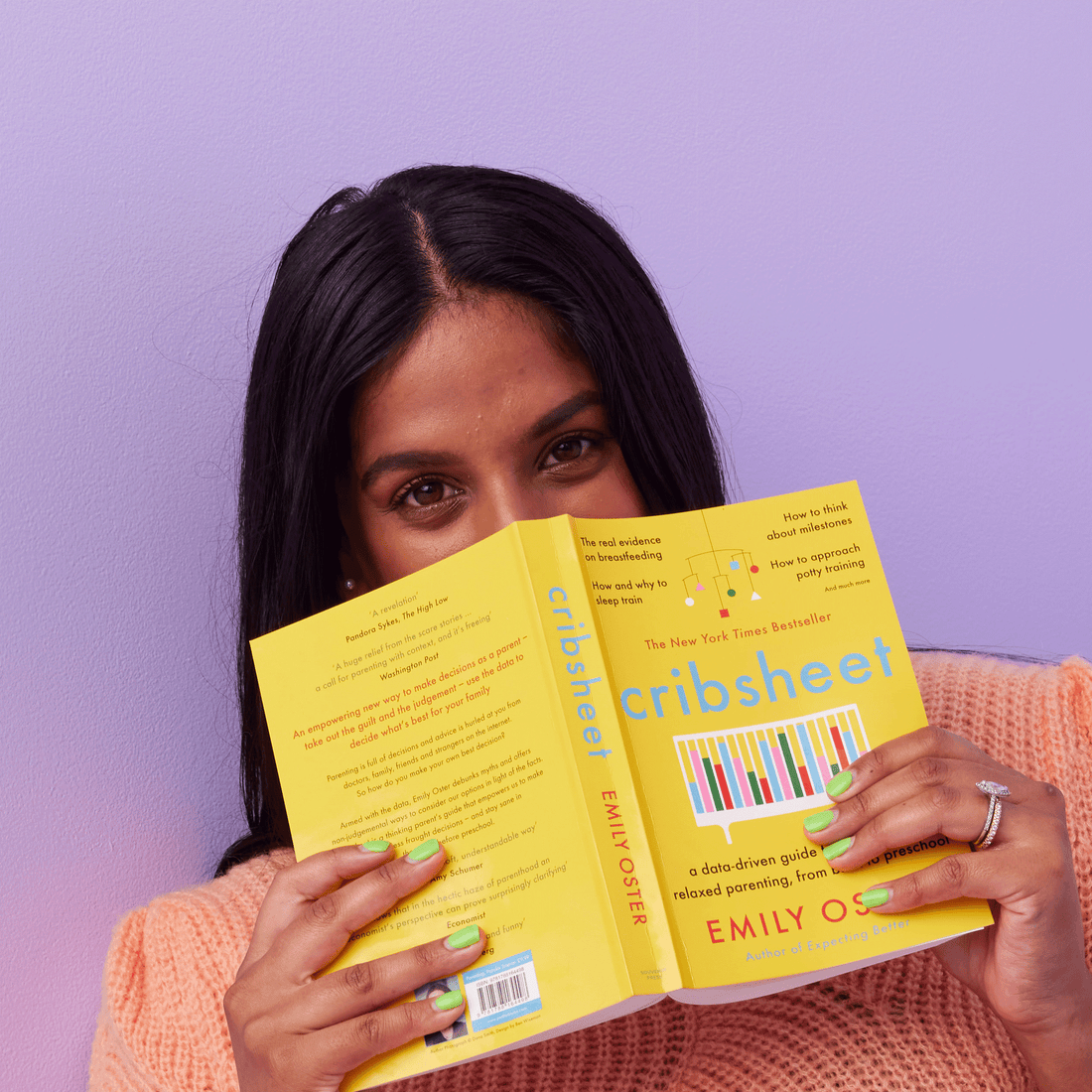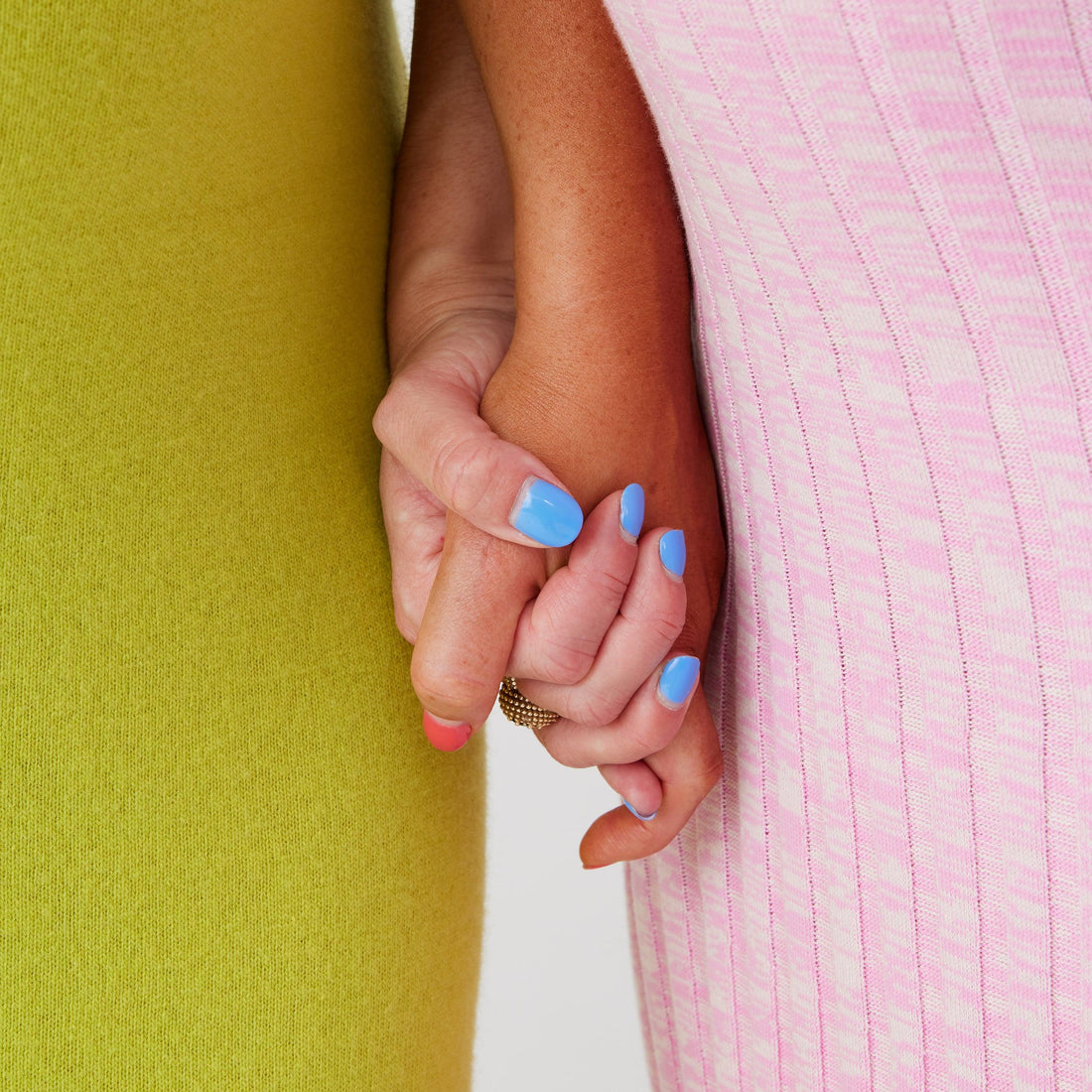The whole process was so eye opening.
For Rochelle Logozzo and Maddy Roberts, who host the podcast Those Two Mums, children had always been on the cards. They were two years into their relationship and newly engaged when they began their IVF journey as a same sex couple. Here they share their story, and the things they learnt along the way.
The conversations (and decisions) start early.
Maddy is one of six kids and I come from an Italian heritage so we both love being a part of a big family and wanted that for ourselves. Being a same sex couple we knew it could be a long journey so we began the conversation early — only 18 months into our relationship.
But starting a family was only the first decision of many in this process; the next was who would carry. We decided on Maddy mostly due to our work circumstances — I’m a full-time paramedic in Northern NSW and Maddy has a full time position in Sydney, we knew Maddy’s work was more flexible. I also didn’t have any desire to carry initially so was happy to pass the reins over to Mads!
Even though Maddy would carry, we made the decision that we would conceive via reciprocal IVF. This is where one partner carries the other partner's embryo. We are very lucky to have the option to do this as I know in other states (particularly WA) it is not permitted to do reciprocal IVF unless one partner is deemed infertile.
Do your research
My best advice for anyone going through the process would be to do your research, because although some challenges are the same as heterosexual couples, many are different. Speak to other couples, look online, call clinics, slide into our DMs! Just get as much information as possible.
For example, some clinics don’t accept same-sex couples, however we already knew many couples who had gone through the process at our clinic so knew this wouldn’t be an issue for us.
Same-sex couples are also required to complete a counselling session after initial blood tests etc. Initially I was taken aback and confused by this because I know this is not something heterosexual couples face. But I quickly learnt that the idea behind this session is to discuss how you’re going to raise a child as a same sex couple and how you’ll approach conversations regarding them being from donor sperm — and that made sense. The session was actually very informative and we were given good information on how to have these conversations.
The known donor process can be complex
We were initially going to go with a known donor and had it all lined up. However, the process became very complicated with legal documents being drawn up and finding solicitors etc. The known donor was a really good friend of ours, and to add another layer of complexity he eventually said that while he could commit to one kid he wasn't sure if he wanted to do more than that. We didn’t want the fate of our family resting in someone else's hands and we really didn't want to lose that friendship with him (which we haven't!) so we decided on an anonymous donor.
“We were quite shocked at how limited the donor list was — we only had 9 to choose from.”
The donor list is not extensive
Once the counselling session was complete we had access to the donor registry. However, I believe in some states you need to go on a waitlist first, and in some states, donors can choose who they can donate to — so they can actively exclude same sex families.
We were shocked at how limited the donor list was — we only had nine to choose from, and of those only three were Australian and the rest were international donors (our fertility clinic is affiliated with an international sperm bank). We decided to go with an international donor because they undergo stricter medical testing and have to provide more in depth information about themselves and their family history which made us feel more comfortable.
We had a pretty good idea of the type of donor we were after; similar features and colouring to us and of course a good medical history. We were so lucky to find a donor straight away with similar features to us and with Danish/Spanish heritage so we locked it in. But it’s definitely not a cheap part of the process, each donor vial of sperm cost us $1700 because it was an international donor (the Australian ones were $500). We have four more vials of donor sperm reserved because it is a non negotiable for us that all of our kids have the same donor.
It’s not a straight path for any of us
After locking in the donor we could start the IVF process. As we were using my embryo I was the one who had to go through the hormone injections and egg retrieval.
This was the first surprise. Prior to the retrieval I was told by the obstetrician that it looked like I had a lot of mature eggs and I could expect somewhere between seven and fourteen eggs. When I came out of surgery I had ‘5’ written on my hand and the obstetrician told me that they struggled retrieving many eggs and were all very shocked. Out of those five eggs, only four were classed as “mature” enough to be fertilised and further to that only one egg actually fertilised on day one.
The chances of that fertilised egg growing into a day five embryo are less than 50% so the five-day wait was tortuous. But it did! And we had one little embryo frozen in the freezer.
You’ll have to seek your own support
Maddy had a relatively easy pregnancy with no complications and only a few weird food aversions. We went through the private system and I think because we went through the hospital that was attached to our fertility clinic us being a same sex couple wasn’t unusual – we were treated just like any other couple. If anything we had the midwives comment about how great having two mums is.
But that said, no specific support was offered to us as a member of the LGBTQIA+ community either. As nice as it was to be “just another couple”, it would have been nice to speak to more LGBTQIA+ couples, in particular women who were becoming mothers but not the birth parent. I found this a challenging area to navigate, and this topic is actually one of the main reasons we started our podcast.
“From an LGBTQIA+ view, the hardest part of pregnancy was everyone assuming I was straight and always asking about my ‘husband’.”
Parenting is still a heteronormative space
Maddy: From an LGBTQIA+ view, the hardest part of my pregnancy was everyone assuming I was straight and always asking about my ‘husband’. I once called up to make an appointment with a midwife for a chat about the birth process and she said “oh don’t worry about bringing your husband, the session will go for too long and he will probably get bored anyway”. That made me so angry because 1. Why was it assumed I am straight and married? And, 2. Why was it assumed that the husband shouldnt or doesn't want to be involved in all aspects of the birth! Blew my mind.
“When we are holding hands or being affectionate in public people do sometimes look our way and stare for a few seconds longer than probably necessary but I also understand that it is not something people would see every day. So if we can be the ones to put it out there to the world and normalise it more, we are all for it!”
Rochelle: When we’re out on the street a lot of people don’t instantly assume we are a two mum family unless we are making it glaringly obvious. When we are holding hands or being affectionate in public people do sometimes look our way and stare for a few seconds longer than probably necessary but I also understand that it’s not something people would see every day. So if we can be the ones to put it out there to the world and normalise it more, we are all for it!
That kind of thing doesn’t bother me, but something that did was when I took Macklyn for her 4-month Maternal Health checkup. Naturally I just put my name down for the contact details, but as we were leaving the nurse called out to the receptionist in front of a busy waiting room and says “Oh on Macklyn’s file can you just put Maddy down as the mum instead because she's breastfeeding and list Rochelle as the other parent”. It honestly broke my heart, and made me feel very less than, and I think its a very outdated way to do things.
If there was one takeaway it’s that people will assume and judge no matter what so instead of getting upset at that, use it as way to educate people that a two mum family is a normal family too.I think what we can do as society is to represent same sex families more — there can never be enough representation! In books, in ad campaigns - everywhere. That’s where we start.


















